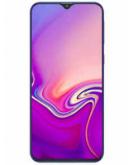Do you want to know more about the Samsung Galaxy A20 3GB 32GB? We have already selected all the specifications for you and listed below.
The Samsung Galaxy A20 3GB 32GB was launched in April 2019. The smartphone comes with a 6,4 inch screen with a resolution of 720 x 1560 pixels.
Processor
This Samsung is powered by a Samsung Exynos 7 Octa 7884 64-bit chip with a 1,6 GHz Dual-Core + 1,6 Ghz Hexa-Core core distribution. One of the main benefits of an octa-core phone is that it can provide improved performance. Because it has more cores, an octa-core phone can handle more complex tasks and multitasking more efficiently than a phone with a lower number of cores. This can make the overall user experience more smooth and responsive, and can improve the phone's ability to run demanding apps and games.
Another benefit of an octa-core phone is that it can provide better power efficiency. Because the CPU can handle tasks more efficiently, an octa-core phone can use less power to perform the same tasks as a phone with fewer cores. This can result in longer battery life and improved energy efficiency.
This combination therefore gives a maximum power of an octa-core processor with 3072 MB RAM. With a thickness of 7.8 millimeters, the device is not too thick. This phone only weighs 0 grams.
Camera
The Galaxy A20 3GB 32GB has a 13 megapixel camera, it means that the camera is capable of capturing detailed images without the added cost and complexity of a higher megapixel count. This can be useful if you want to take high-resolution photos that you can zoom in on or crop without losing too much detail, but you don't need the very highest level of image quality. In general, having this amount of megapixels can provide a good balance of image quality and affordability. You can also use the 8 megapixel selfie camera for video calling, for example.
Pros
- 13 megapixel camera
- 64-bit octa-core processor
- Face recognition for quick unlocking
- Not too thick with 7.8 millimeters
- (Relatively) new operating system: Android 9.0 (Pie)
- HSDPA, LTE-A support for super fast internet
- Enough RAM (3GB)
- With a 4000 mAh battery you are not likely to run out of power
Negatives
Call & data functions
The Samsung Galaxy A20 3GB 32GB supports frequencies from international networks with which you can use the fastest LTE-A network. The speed of LTE-A is perfect for watching video on the go via your mobile network, where the speed is often even higher than the WiFi connection at home. Choose a large data package with this device. You can also connect via WiFi at home or at the office.
Memory and connection options
The Samsung Galaxy A20 3GB 32GB has 3072 MB of RAM (3 GB) and 32 GB internal storage . Expandable memory: microSD up to 512GB. There is a USB connection, you can use this to exchange data with your laptop or to charge your device. Connecting Bluetooth headsets or car kits is no problem.
Do you take a lot of photos and videos? Then the storage of 32 GB is less suitable. You may need to clean your phone after a while. Furthermore, there are of course possibilities to expand storage in the cloud, such as with Google Drive or Dropbox.
Screen & operation
The phone is operated via the huge 6,4 inch touchscreen.The Samsung Galaxy A20 3GB 32GB can display up to a 16 millions colors. This screen has a resolution of 720 x 1560 pixels. With 268 pixels per inch, this eXtra High density screen is sharp and easy to read. It also takes less effort to look at it for a long time.
Operating system
Android 9.0, also known as Android Pie, is a version of the Android operating system that was released in 2018. It includes a variety of new features and improvements, such as enhanced battery life, support for gesture navigation, and new security features.
Some of the key new features of Android 9 include:
- Adaptive battery: Android 9 introduces a new adaptive battery feature that uses machine learning to optimize battery usage by limiting the power used by apps that are not actively being used.
- App actions: Android 9 introduces app actions, which are predictions of what users are likely to do next based on their context and usage patterns. These actions can appear in the app drawer, search results, and other places, making it easier for users to find and use the apps they need.
- Digital wellbeing: Android 9 includes a new set of tools and features to help users manage their digital habits and improve their overall wellbeing. These tools include a dashboard that shows users how much time they spend on their phone and in specific apps, and a new "Wind Down" mode that helps users disconnect from their phone at night.
- Gesture navigation: Android 9 introduces a new gesture-based navigation system that allows users to control their device using swipe gestures. This new navigation system replaces the traditional on-screen navigation buttons with a single home button that can be swiped to access different functions.

